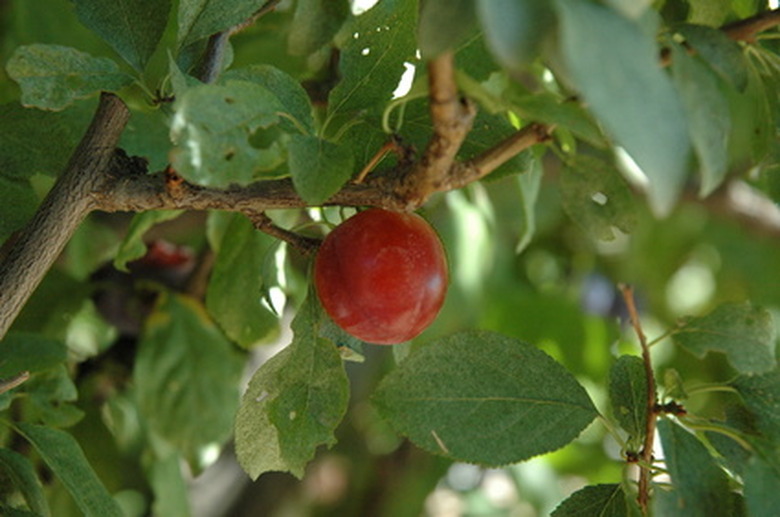How To Grow An Umeboshi Plant
Things Needed
- Peat moss
- Plastic bag
- Prunus mume seed
- Pot
- Compost
- Water pot
- Fish emulsion
- Shovel
- Stake
- Garden twine
- Pruners
Umeboshi is a popular canned or pickled fruit from Japan. It is eaten as a condiment or on its own and it comes from the Japanese apricot or Prunus mume. The fruit is actually a plum but the apricot is also in the Prunus family. The tree was introduced from China and is an important part of the early spring plum festivals held in Japan. Plum blossoms are very fragrant and the sheer number of plum trees in Japan scents the air. Ume fruit are sour compared to western plums which is why they are processed before eating.
Step 1
Place the seed in a bed of peat moss inside the plastic bag. Put it in the refrigerator for four months. This will stratify the seed or give it a required period of chilling before germination. The refrigerator is simulating a winter for the seed.
- Umeboshi is a popular canned or pickled fruit from Japan.
- The fruit is actually a plum but the apricot is also in the Prunus family.
Step 2
Fill the pot with compost and plant the seed with just a thin layer of compost to cover it. Water the seeds and keep the pot in a warm light area to germinate. Water daily or as needed to keep the pot evenly moist on the top.
Step 3
Fertilize after the seedling has four true leaves at approximately 3 to 4 inches high. Add a dilution of fish fertilizer to the water in a rate recommended by the manufacturer.
Step 4
Transplant the tree when it is several feet high. Plant it in the ground in late winter or early spring before the new leaf buds open. Dig the hole as deep as the root ball and an inch wider and spread the roots on the seedling out in the hole. Mix 2 inches of compost into the back fill pile of soil and re-fill the hole. Tamp the soil around the roots but do not bury the stem.
- Fill the pot with compost and plant the seed with just a thin layer of compost to cover it.
- Water the seeds and keep the pot in a warm light area to germinate.
Step 5
Prune the tree in summer to keep the shape and open up the center. Remove all the dead and broken wood. Stake the tree if it starts to lean. Prunus mum will flower in February to March and will produce hairy yellow fruits.
